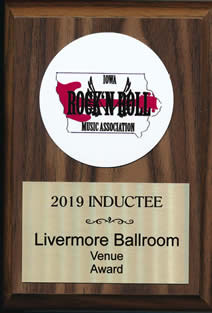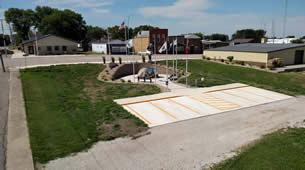
Humboldt County Freedom Rock 2016
Corner of 4th Ave. and 4th Street
Freedom Rock Flag(s)
Can be purchased to fly over the Humboldt County Freedom Rock in Livermore. Any donation is welcome. Make checks payable to Livermore American Legion and mail to Richard Erpelding, 1037 Hwy 169, Bode, IA 50519. Please write “Freedom Rock Flag” in the memo line.
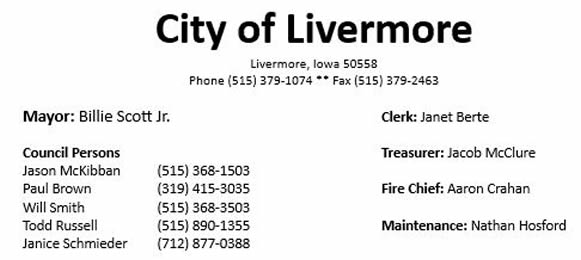
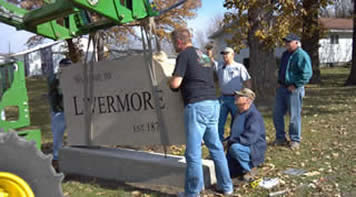
Team Livermore Installs Livermore Welcome Rock
at West edge of town on October 16, 2012
Corner of 3rd Ave and 8th Street
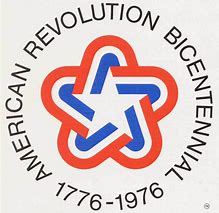
City of Livermore History
Livermore is a city in Humboldt County, Iowa, United States. The population was 384 at the 2010 census. Livermore is the hometown of former University of Iowa and NFL tight end Dallas Clark.
Livermore was founded in 1879. The community grew in importance as an agricultural center with grain elevators and feed mills and merchants serving the surrounding rich farmland. The community is located adjacent to the confluence of the East Fork Des Moines River and Lott's Creek. Early industries included a brick and tile factory and agricultural products processing. As north central Iowa's rural population dwindled, so has Livermore's population. Its remaining elementary school closed in 2005.
Livermore is located at 42°52′1″N 94°11′3″W (42.866849, -94.184051) at the confluence of Lotts Creek with the East Fork Des Moines River. According to the United States Census Bureau, the city has a total area of 0.70 square miles all of it land. Livermore has a humid continental climate including all four seasons characterized by harsh winters, and mild summers. July is the hottest month of the year, with an average high of 84 °F (29 °C) and an average low of 62 °F (17 °C). Temperatures above 100 °F (38 °C) are uncommon. January is the coldest month with an average high of 25 °F (−4 °C) and an average low of 7 °F (−14 °C). The city's highest temperature was 104 °F (40.0 °C), recorded in 1982. The lowest temperature recorded was −33 °F (−36 °C), in 1985.
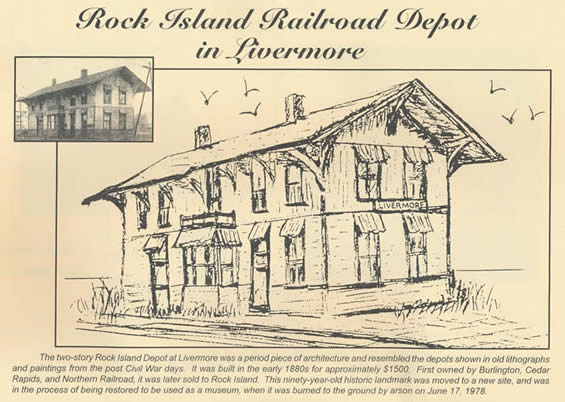
Livermore Bicentennial Celebration June 1976
Livermore Bicentennial Dedication Program
George Mills recalled 19th Centruy Happenings
Bicentennial Kick off at Livermore Old Settlers Park
Chi Centra Singers Sing Bicentennial Salute in Old Settlers Park Sunday June 6, 1976
"America on Parade" Pageant June 7, 1976
Livermore Bicentennial Arts & Crafts Festival Program
Livermore Bicentennial TriFold Brochure
Old Creamery Theatre Co. Livermore School Gym
Livermore Fourth Annual Little Britches Rodeo Days
Earl Bloomquist Shearing a Lamb
Moonshiner Bob Bahr Corn Whiskey Still
Pictures from the Bicentennial Celebration June 1976
Livermore Bicentennial
Depot Preservation

Livermore Bicentennial Depot Preservation Committee Letter October 6 1975
Livermore Bicentennial Depot Preservation
Mayor and Council Letter September 18 1975
Livermore Iowa American Revolution Bicentennial Commission Depot Preservation Letter August 4 1975
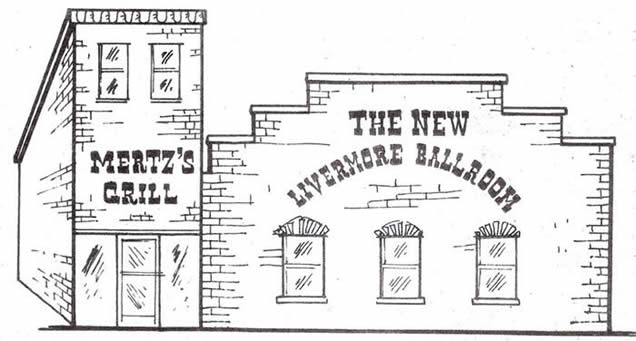 |
September 1, 2019
|
Click Here For Full History PDF
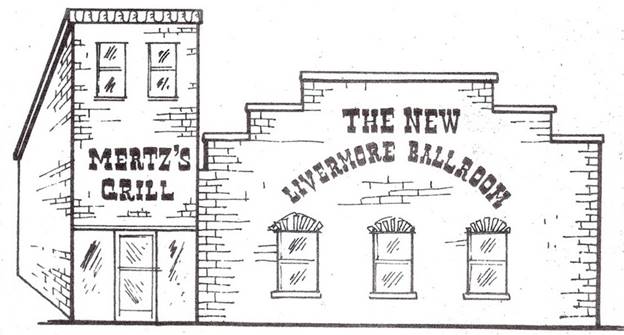
March of 1976 Mr. Melvin Mertz bought the Livermore Ballroom from Leonard A. Rosenau and Irene A. Roseau
Lester Smith applied for a building permit with the Livermore City Council on June 7th 1938, to erect a 6000 square foot frame building to be used as new Ballroom amusement hall, Construction of the new ballroom building was started June 23, 1930 and was built on the corner lot attached to the existing Smith Café. Mr. Smith named the new ballroom the "Figueroa," after the longest street in Los Angeles, California. Leonard A. Rosenau and Irene A. Roseau purchased smith café in 1956 and operated “Rosey’s café” and the he renamed the ballroom to “Livermore Ballroom” and held many different dance bands every weekend!
In March of 1976, Leonard A. Rosenau and Irene A. Roseau sold the Livermore Ballroom to Melvin Mertz. Mr. Mertz packed the Livermore Ballroom with crowds of 400 to 500 people. Mertz hosted many of the Iowa and surrounding state Rock-N-Roll bands, like rock ‘n’ roll garage band “Judd” also known as the Judd Group, was easily the most successful garage band in Rochester, MN. “Judd’s” went national in the 1970s when the band recorded two albums, “Rhythm and Space” and “Second Thoughts,” and they toured with major acts like the Beach Boys, Ike & Tina Turner, and Todd Rundgren. The band “Dahcotah” rocked the Midwest for a decade, from 1970 to 1980. Dahcotah was based in Cedar Falls, Iowa and when they played at the “Livermore Ballroom”, they had a hit single, “Too Easy to Love,” which came out in 1976, and received strong airplay across the nation. They had a great repertoire of country rock, Beatles, Buffalo Springfield, Byrds, and originals, making Dahcotah a very popular band.
The “Gray James” band rocked the Midwest from 1975 thru 1982. They were the ultimate show and performance band. Gray James began as a dream by Britt, Iowa high school classmates Jim Surat and Ron Lewerkeback in 1971. They put on a rock show bigger and better than anything being produced at that time, especially in rural Iowa in the '70's. The band played most any kind of event requiring great rock music from 1975-1981; Livermore Ballroom was one in which Gray James shone and the Livermore setting was perfect of a large concert atmosphere and great partying! Unfortunately, the band decided to call it quits in 1981 to pursue other ventures. “Jesse Brady” band were formed in Minneapolis, Minnesota and were one of the great regional acts of the 1970's through the early 1980's, playing music selections by Deep Purple, Led Zeppelin, James Gang, Cream, Jimi Hendrix, and the Yardbirds. Other known bands playing the at the “Livermore ballroom” were “Roxx”, “Brainiac”.
Landmark “Livermore Ballroom” burned down early Friday morning June 22, 1979, the Livermore Ballroom building where good times prevailed for two to three generations burned down to the ground, thus ending the history of good Rock-N-Roll in in Livermore, that had kept the City of Livermore, Iowa swinging for many years!
Lviermore School

Livermore Iowa Churches
Livermore United Methodist Church
100 Year Anniversary Sunday, April 23, 1978
Livermore Bethel Presbyterian Church
100 Year Anniversary 1870 - 1970
Livermore, Iowa
Livermore was a town that from the very beginning did not lack for good social entertainment for their own community, as well as its surrounding neighbors. In 1891, W.F. Miller constructed at 70' x 25' opera house, at the southwest end of Main Street. This building held 400 people and was called "Miller's Opera House." The interior of the building had fancy opera seats and a fine stage. The operas that were performed were of a refined class.
On February 15 and 16, 1900 the “Humboldt Co. Farmers’ Institute” held their “Program” at the Miller Opera House with Augustus P. Webber presenting a paper entitled “Farm Fence and Fencing, how to build it and what of.” J. Smart, John Frederick and John O’Neil discuss his paper that was one of seventeen presentations given.
Then in late 1919 or early 20's, Frank Collins purchased the opera house. Dances, stage shows and silent movies were presented for public entertainment. In the late 20's, Bert Sheppard took over this building, enlarged it, and added a roller-skating rink.
In 1945, Rich Osborn, and John Olson leased the building and used it for a repair shop. Later, Bob Shaw used it to make cement blocks.
The building was finally taken down by Iner Frederiksen in 1953. Some of the pine boards were removed by Arnold Kellner, Tom McKenna and Paul McKibban, that were used at the Dick Dunphy’s farm to build sheep pins.
The ground was later purchased by the City of Livermore and was used to store City Street equipment along with stone piles and asphalt patching materials.
In 1980 Jeff Berte of Berte and Son LTD. purchased the ground from the City of Livermore and in 1981 they built their pole frame metal warehouse and office that was used for the Berte and Son LTD. Construction!
On February 16, 2000 Kirk Hundertmark purchased the building from Jeff Berte – Berte & Son LTD. and is currently the office of Livermore Telephone and Communications Co., Inc. and 911 Equipment warehouse.
THE LIVERMORE GAZETTE
The Livermore Gazette was stated September 30, 1882, by C. B. Hull. It was first printed at Lake Mills. On January 19, 1883, there was a change in management wherein Jay Boright became its editor and it was printed in Humboldt.
The first issue of it published in its own town and with its own outfit was advanced by George Tillson of Livermore and the management was undertaken by M. A. Bancroft of Independence who was to become proprietor when all debts were paid. In a like manner on February 1, 1884, the present editor and proprietor, W. F. Miller took possession of it and issued it as an independent republican paper, the policy by the way which has been pursued from the first.
W. F. Miller, the present editor of the Livermore Gazette, was born in Fayette, Iowa. He has followed the newspaper business since he was ten years of age. Mr. Miller came to Livermore from Independence and brought the Gazette. As he had little capital to carry on the work the same was advanced to him by George Tillson on very favorable terms but it required only a short time for the plant to pay for itself and become one of the papers of Humboldt County.
On January 17, 1945, the Livermore Gazette's presses stopped forever. After sixty-three as editor and publisher, W. F. Miller retired.
City of Livermore
401 4th Ave.
Livermore, Iowa
50558
ph: (515) 379-1074
fax: (515) 379-2463
E-mail livermore@trvnet.net
-
Copyright City of Livermore
All rights reserved.
